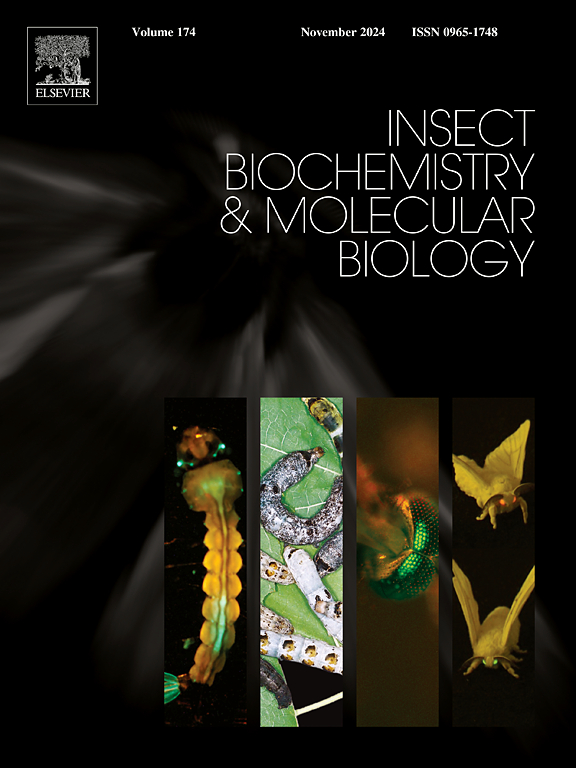利用基于核糖核蛋白的CRISPR/Cas12a系统进行家蚕诱变
IF 3.7
2区 农林科学
Q2 BIOCHEMISTRY & MOLECULAR BIOLOGY
引用次数: 0
摘要
高效基因组编辑工具的发展已经彻底改变了蚕的发育生物学和遗传研究。尽管基于CRISPR/Cas9的方法目前很流行,但Cas12a系统已经成为一个有前途的选择。然而,它尚未在体内应用于家蚕基因组,其在家蚕体内的活性尚未表征。在本研究中,我们建立了基于核糖核蛋白的CRISPR/Cas12a系统,并利用19个crRNA和17个sgrna在体内靶向3种不同的基因,与CRISPR/Cas9系统进行了比较。虽然Cas12a产生突变体的效率低于Cas9,但我们成功地利用它产生了可传播的基因,并通过靶向FibH和mp基因产生了具有预期表型的突变体,证明了它的应用。我们还评估了温度(37°C vs. 25°C)对Cas12a活性的影响,并证明这些影响依赖于靶标。综上所述,我们在家蚕中建立了一个基于核糖核蛋白的CRISPR/Cas12a系统,为CRISPR/Cas9提供了一个实用的替代方案,扩展了家蚕研究的基因组编辑工具箱。本文章由计算机程序翻译,如有差异,请以英文原文为准。

Silkworm mutagenesis using a ribonucleoprotein-based CRISPR/Cas12a system
The development of highly efficient genome editing tools has revolutionized developmental biology and genetic studies in silkworm. Although methods based on CRISPR/Cas9 are currently popular, the Cas12a system has emerged as a promising option. However, it has not yet been applied to target the silkworm genome in vivo, and its activity in silkworm has not yet been characterized. In this study, we established a ribonucleoprotein-based CRISPR/Cas12a system, and compared it to the CRISPR/Cas9 system using 19 crRNA and 17 sgRNAs to target three different genes in vivo. Although Cas12a generates mutants less efficiently than Cas9, we used it successfully to generate transmissible indels, and demonstrated its application by targeting the FibH and mp genes to produce mutants with the expected phenotypes. We also assessed the influence of temperature (37 °C vs. 25 °C) on Cas12a activity, and demonstrated that the effects are target dependent. In summary, we have established a ribonucleoprotein-based CRISPR/Cas12a system in silkworm that offers a practical alternative to CRISPR/Cas9 and extends the genome editing tool box available for silkworm research.
求助全文
通过发布文献求助,成功后即可免费获取论文全文。
去求助
来源期刊
CiteScore
7.40
自引率
5.30%
发文量
105
审稿时长
40 days
期刊介绍:
This international journal publishes original contributions and mini-reviews in the fields of insect biochemistry and insect molecular biology. Main areas of interest are neurochemistry, hormone and pheromone biochemistry, enzymes and metabolism, hormone action and gene regulation, gene characterization and structure, pharmacology, immunology and cell and tissue culture. Papers on the biochemistry and molecular biology of other groups of arthropods are published if of general interest to the readership. Technique papers will be considered for publication if they significantly advance the field of insect biochemistry and molecular biology in the opinion of the Editors and Editorial Board.

 求助内容:
求助内容: 应助结果提醒方式:
应助结果提醒方式:


